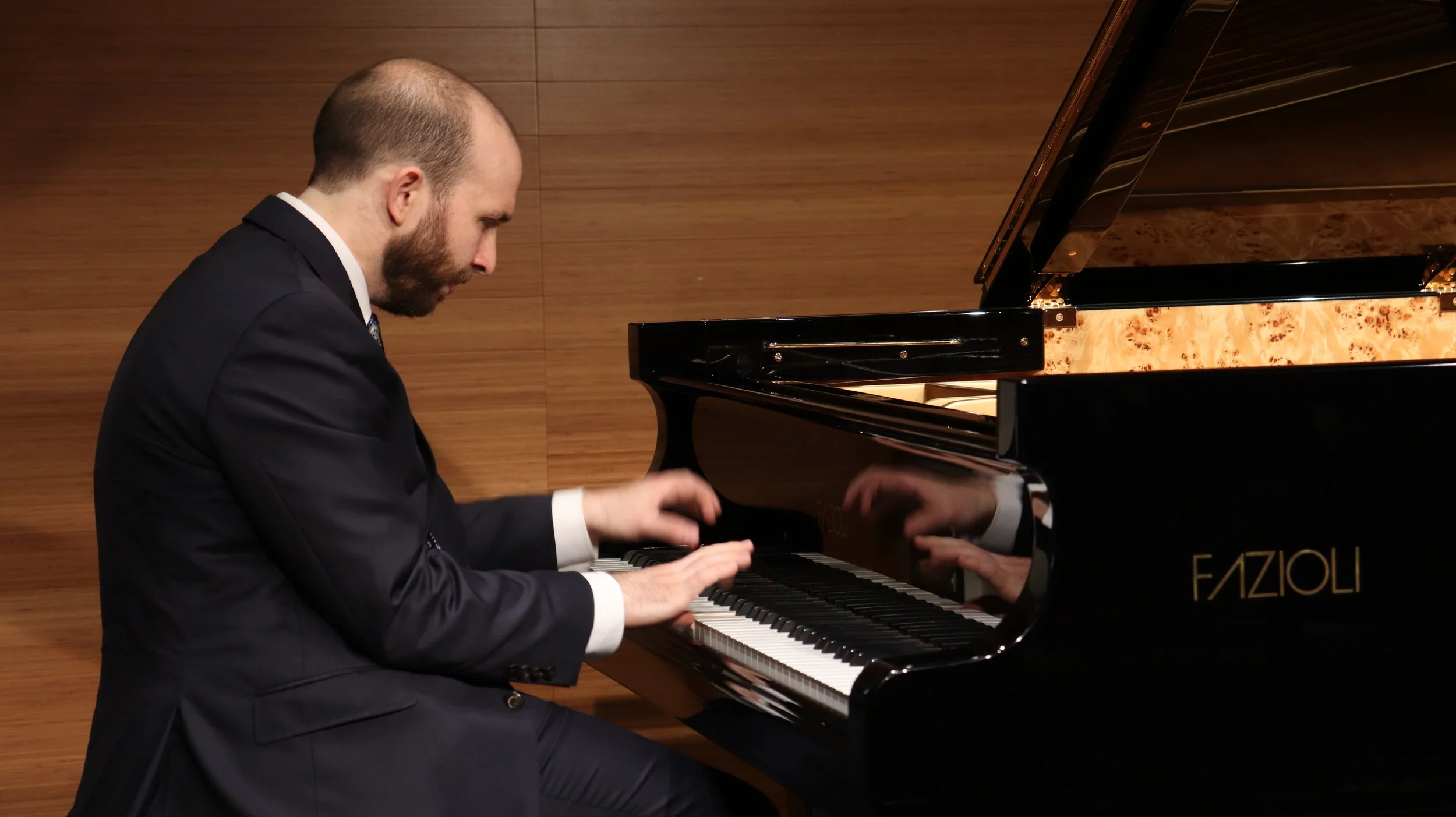Scriabin Piano Sonata 10
This piano sonata is the last Scriabin composed. Like the previous 4 sonatas, it is in one movement. The 10th sonata demonstrates Scriabin's idiosyncratic and highly compelling approach to composition and harmony, which he developed later in life and that contrasts with his earlier works, which are much more romantic and traditionally tonal. This piece is sometimes referred to as the "Insect Sonata" because of Scriabin's evocative use of trills (quick alterations between two notes), which start off simply and slowly expand until they encompass massive and dissonant chords. The opening motive, a falling major third followed by a falling minor third, is the genesis for almost all the musical material that follows. This was performed live at a recital at Hatch Recital Hall in Rochester, NY.
Barber Nocturne in A-flat Major Op. 33
Barber's Nocturne is subtitled "An Hommage to John Field." Field was the first composer to write and popularize nocturnes, a type of character piece that Chopin would later make famous. Samuel Barber expertly mixes an older aesthetic - a simple accompaniment beneath a singing melody - with modernist compositional technique. The opening melody is a twelve-tone row and, when the melody starts to descend, Samuel Barber presents it in retrograde (backwards). While this composition is not a strictly serialist work, it demonstrate Barber's ability to absorb a variety of musical techniques and synthesize them into a personal and beautiful work of art. This was performed live at a recital at Hatch Recital Hall in Rochester, NY.
Prokofiev Fifth Piano Sonata
This piano sonata is in three movements. Unlike Prokofiev's War Sonatas (numbers 6-8), this sonata is smaller in scope and more restrained in emotion. Although virtuosic at the end, its technical challenges are, in general, less overt than many of Prokofiev's other works for piano. This sonata is an excellent representation of Prokofiev's compositional style. It consists of 5 general elements: Contrapuntal Rigor, Lyricism, Classical Forms, Motoric Rhythms, and (my personal favorite) an element of the grotesque in his treatment of dissonance. This performance is from a recital that I gave in 2015 in Kilbourn Hall at the Eastman School of Music. I hope you enjoy it!
Grieg Berceuse Op. 38 No. 1
The Norwegian composer Edvard Grieg composed 10 books of Lyric Pieces between 1866 and 1901 made up of collections of character pieces and folk dances. This Berceuse is the first from his second book of lyric pieces published in 1883 and demonstrates Grieg's mastery of lyrical lines and harmonic ingenuity. The title Berceuse, from the French verb Bercer meaning to rock, means Lullaby. The music that begins this work is precisely that: gentle, calm, bewitchingly melodic, and somehow safe and familiar. The rhythmic and syncopated middle section carries suggestions of a halling dance: a Norwegian folk dance in two with syncopated accents. Grieg ends this short work with the music of the opening, before gently letting the music drift away in the higher registers of the piano. This performance was recorded from live and was dedicated to my parents.
